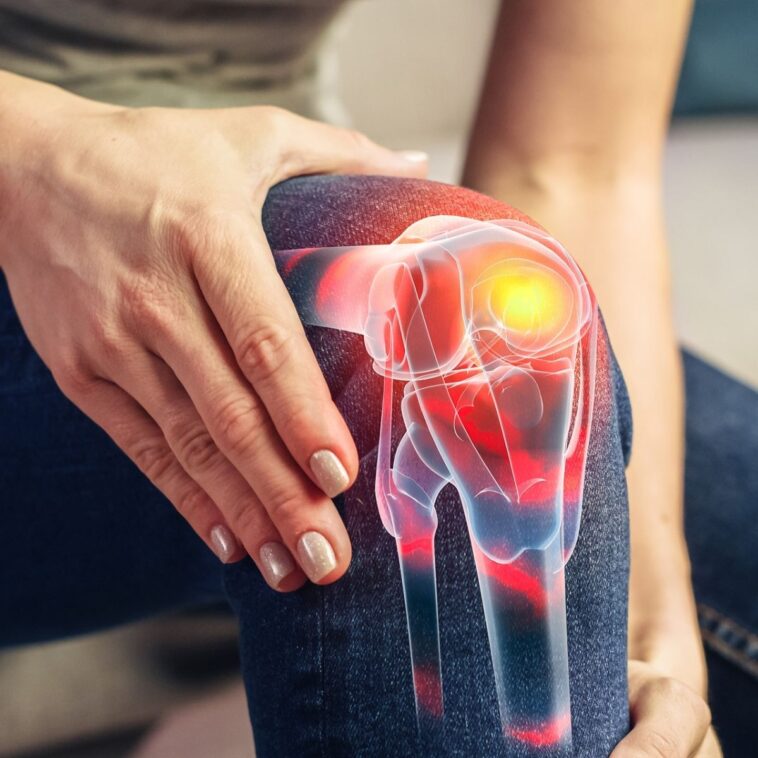As we get older, it’s natural to feel a few aches and pains. But sometimes, what we brush off as “just getting older” might actually be early signs of arthritis. Catching these signs early can make a big difference in managing the condition.
Many people don’t realize that arthritis symptoms can start showing up years before the condition becomes severe. By knowing what to look for, you can take action early and help protect your joints for the years ahead.
Let’s explore the warning signs that your body might be trying to tell you something isn’t quite right.
1. Morning Stiffness That Won’t Go Away
Do you feel like the Tin Man from The Wizard of Oz when you wake up? Morning stiffness that lasts more than 30 minutes isn’t normal aging. Healthy joints should loosen up quickly after you start moving.
This kind of stiffness, especially if it happens regularly, is one of the earliest signs that arthritis might be developing. Pay attention if this keeps happening, even on warm days.
2. Unusual Fatigue and Weakness
Feeling unusually tired, even after a good night’s sleep, might not just be about getting older. When your body is fighting inflammation in your joints, it can drain your energy levels.
If you notice you’re getting tired more easily or feeling weaker than usual, especially along with other joint symptoms, your body might be telling you something important.
3. Minor Joint Pain After Normal Activities
It’s normal to feel sore after heavy exercise. But if everyday activities like climbing stairs or opening jars start causing pain, take notice. This is especially true if the pain lasts longer than usual.
When normal activities become consistently uncomfortable, it’s time to pay attention to what your body is saying.
4. Swelling in Small Joints
Keep an eye on your fingers and toes. If they start looking puffy or feeling tight, especially in the morning, this could be an early warning sign. The swelling might come and go at first.
You might notice your rings feeling tighter some days, or your shoes feeling snug for no apparent reason.
5. Reduced Range of Motion
If you start having trouble with simple movements like reaching behind your back or bending to tie your shoes, don’t ignore it. These changes often happen so gradually that they’re easy to miss.
Try to notice if certain movements become more difficult over time, even if they’re not painful yet.
6. Clicking or Popping Sounds
While some joint sounds are normal, new or increased clicking, popping, or grinding noises when you move might signal early joint problems. This is especially true if these sounds come with discomfort.
Pay attention to new noises your joints make, particularly if they happen regularly.
7. Numbness and Tingling
Sometimes early arthritis can affect the nerves around your joints. You might feel occasional numbness or tingling in your hands or feet, especially at night or first thing in the morning.
These sensations might come and go at first, but they shouldn’t be ignored if they keep happening.
8. Changes in Joint Appearance
Look for small changes in how your joints look. Your knuckles might appear larger, or your fingers might start to lean slightly to one side. These changes often happen very slowly.
Even subtle changes in joint appearance can be important early warning signs.
9. Increased Pain in Cold Weather
If your joints start to predict the weather better than the local forecast, take note. Increased joint discomfort during cold or damp weather can be an early sign of arthritis.
This weather sensitivity often shows up before other more obvious symptoms appear.
10. Difficulty Gripping Objects
Having trouble holding onto things like cups or pens? This could be an early sign of joint problems in your hands. You might notice you’re dropping things more often.
Pay attention if activities requiring fine motor skills become more challenging.
11. Symmetric Joint Pain
If you start feeling similar pain in the same joints on both sides of your body, this is particularly noteworthy. For example, both knees or both wrists hurting at the same time.
This kind of symmetric pain is a classic early sign of certain types of arthritis.
Taking Action Early
If you notice any of these signs, especially if they last more than a few weeks, it’s worth talking to your doctor. Early treatment can make a big difference in managing arthritis.
Remember, these signs don’t always mean you have arthritis, but they’re worth checking out. Your doctor can help figure out what’s causing your symptoms and recommend the best way to protect your joints.
Don’t wait until the pain becomes severe to take action. The sooner you address these symptoms, the better chance you have of maintaining your joint health and staying active for years to come.


